It’s a great time to be interested in old master paintings, for people in Hong Kong and on the mainland. Madeleine Fitzpatrick swings by the museums and auction houses.
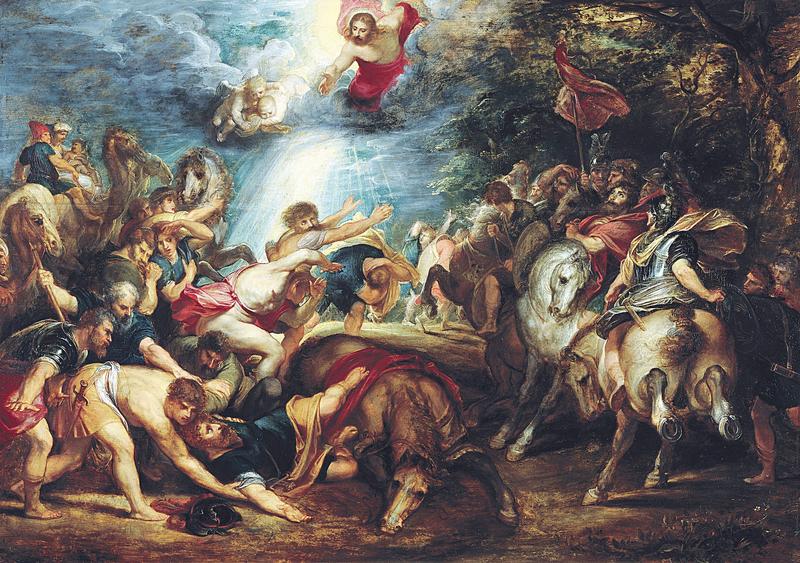 Peter Paul Rubens’ The Conversion of Saint Paul, currently on display at the Hong Kong Palace Museum. (PHOTO / © LIECHTENSTEIN. THE PRINCELY COLLECTIONS, VADUZ–VIENNA)
Peter Paul Rubens’ The Conversion of Saint Paul, currently on display at the Hong Kong Palace Museum. (PHOTO / © LIECHTENSTEIN. THE PRINCELY COLLECTIONS, VADUZ–VIENNA)
The art world, in China as elsewhere, has been all abuzz with talk of non-fungible tokens, artificial intelligence, virtual reality and augmented reality. However, if a recent spate of exhibitions is anything to go by, interest in old masters — art done the traditional way, with brush and canvas — is also surging ahead.
Between early October and early November last year, it was possible to see at least five museum exhibitions featuring old masters in Hong Kong, Shanghai and Beijing alone. Two of those exhibitions are ongoing.
For the auction houses, China and Asia are particularly exciting parts of the world. “Interest from Asian collectors in old master paintings, and more broadly European classical art, has been growing significantly at Christie’s over the past 10-15 years,” says Georgina Hilton, the auction house’s Asia Pacific head of classic art.
In 2022, Asian clients spent $76.83 million across Christie’s European Classic Art category, or 14 percent of the global total. “Clients from the region often focus on museum-quality works with superb provenance,” says Hilton, adding that at the Hubert de Givenchy — Collectionneur sale at Christie’s Paris in June, Asian buyers accounted for over 20 percent of the total revenue sold.
Christie’s Classic Week New York will have its first live auction on Jan 24. Leading the sales is the star lot of the Old Masters auction the following day: a pair of portraits (1805) of a mother and daughter of the Spanish bourgeoisie, by Francisco Goya. The hammer estimate is $15 million-$20 million.
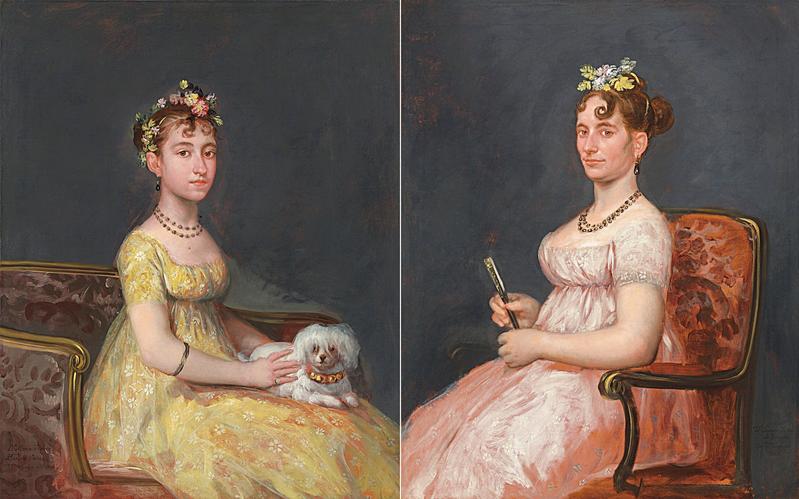 This pair of portraits by Francisco Goya, of Dona Maria Vicenta Barruso Valdes and her mother Dona Leonora Antonia Valdes de Barruso, will be offered Jan 25 at Christie’s New York, having appeared on the market for the first time in over 70 years. (PHOTOS COURTESY CHRISTIE’S)
This pair of portraits by Francisco Goya, of Dona Maria Vicenta Barruso Valdes and her mother Dona Leonora Antonia Valdes de Barruso, will be offered Jan 25 at Christie’s New York, having appeared on the market for the first time in over 70 years. (PHOTOS COURTESY CHRISTIE’S)
Sotheby’s reported a record number of Asian bidders last year, with triple the bids from the under-40s. Asian collectors spent on average 20 percent more than collectors from elsewhere. In the old masters category, Asian collectors bid on average five times more than their American and European counterparts. “These are all signs of an extremely important, dynamic part of the world for collecting that we want to be absolutely taking our best things to,” says Alex Bell, Sotheby’s London-based co-chairman worldwide of old master paintings.
One in three Asian bidders were new to the auction house in 2022. “One of our goals has been to reach new people in China and all over Asia because old masters are something that — while they require study and maybe a little more effort than some other collecting categories — people really relate to,” says Christopher Apostle, Sotheby’s head of old master paintings in New York.
“There are any number of subjects — still lifes, history, portraits, all kinds of genre scenes — that (are) pretty immediate to everybody, whatever culture they’re from.”
Bell and Apostle were in Hong Kong this past November, accompanying a selection of works from next week’s old masters auctions in New York, and last month’s in London. The preview enabled Hong Kong art lovers to view, among other masterpieces, Titian and workshop’s voluptuous Venus and Adonis (c. 1555-57) — which sold at the high end of its estimate for 11.16 million pounds ($13.7 million) — and Peter Paul Rubens’ gruesomely fascinating Salome Presented with the Head of Saint John the Baptist (c. 1609), which will go under the hammer Jan 26 in New York. With an estimate of $25 million-$35 million, the latter was only rediscovered in 1998 after remaining untraced for nearly 300 years.
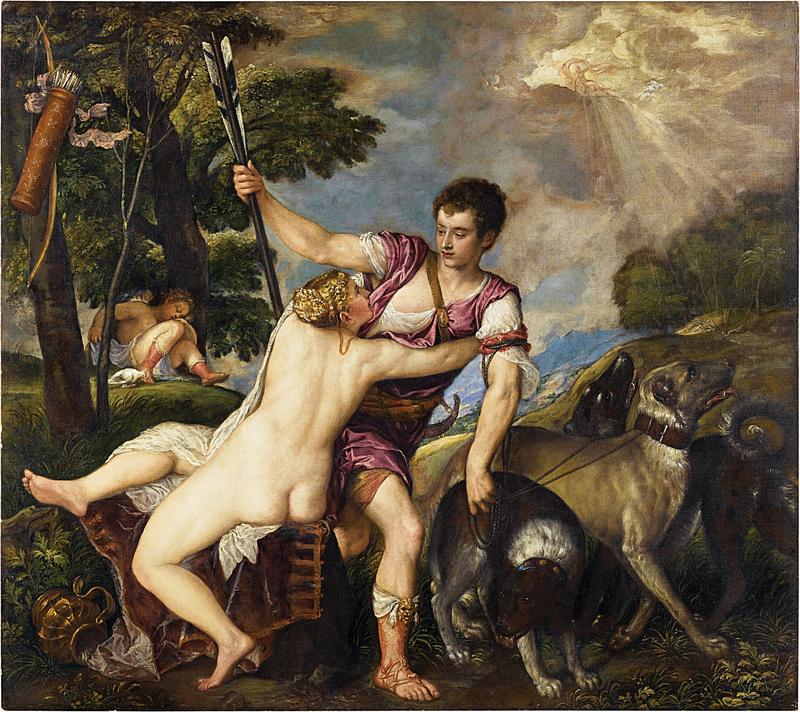 The Venus and Adonis sold by Sotheby’s London in December. The painting by Titian and workshop has many versions, this being the only one to include a foreshadowing of the incipient tragedy. In the distance on the right, Adonis is seen being gored to death by a wild boar, illuminated by a beam of light coming from Venus in the heavens. (PHOTO COURTESY SOTHEBY’S)
The Venus and Adonis sold by Sotheby’s London in December. The painting by Titian and workshop has many versions, this being the only one to include a foreshadowing of the incipient tragedy. In the distance on the right, Adonis is seen being gored to death by a wild boar, illuminated by a beam of light coming from Venus in the heavens. (PHOTO COURTESY SOTHEBY’S)
Sublime subjects
Rubens is known for the dynamism of his compositions, many on religious or mythological subjects. At Odysseys of Art: Masterpieces Collected by the Princes of Liechtenstein — the current and first special exhibition of the Hong Kong Palace Museum (HKPM) — The Conversion of Saint Paul (c. 1601-02) shows the hapless sojourner knocked off his horse by God in heaven, while the figures, and fabrics, surrounding him are all awhirl. Rubens’ ability to convey movement in fabric is unparalleled. In Mars and Rhea Silvia (c. 1616-17), the god is about to ravish the Vestal Virgin, who will go on to bear him the twins — and future founders of Rome — Romulus and Remus. Mars’ red cloak swirls behind and around him, adding to the impression of urgent movement toward his victim.
Also not to be missed at Odysseys is portraiture by Rubens’ best student, Anthony van Dyck; and the landscape painter Canaletto, whose eye for detail, and ability to depict sunlight and shade, are unsurpassed.
The response to the show has been “overwhelming”, according to Johann Kraeftner, director of the Princely Collections of Liechtenstein. “Together with HKPM’s curators, we guided thousands of visitors through the exhibition during its first two weeks,” he says. “The press response and the feedback on social media exceeded all our expectations.”
 Canaletto is famed for his remarkably precise and detailed depictions of Venice, with this exemplar currently on display at the Hong Kong Palace Museum.
(PHOTO / © LIECHTENSTEIN. THE PRINCELY COLLECTIONS, VADUZ–VIENNA)
Canaletto is famed for his remarkably precise and detailed depictions of Venice, with this exemplar currently on display at the Hong Kong Palace Museum.
(PHOTO / © LIECHTENSTEIN. THE PRINCELY COLLECTIONS, VADUZ–VIENNA)
In Shanghai, the public’s response to Bund One Art Museum’s Uffizi Self-Portrait Masterpieces has been so positive that the exhibition has been extended by seven weeks. Showcasing self-portraits from the 16th century to the present, the 50 artists on display include the Renaissance legends Raphael and Titian (both inspirations for Rubens); Rubens and his fellow Baroque master Rembrandt; and the Neoclassical greats Jacques-Louis David and Jean-Auguste-Dominique Ingres.
Beijing’s Parnassus Museum staged Dionysus’ Wildest Dreams between August and November, showcasing over 30 masterpieces by 22 Western artists of the 17th to 19th century, among them Francois Boucher, a Rococo painter celebrated for his idyllic, sensual compositions. And from July to October, Shanghai’s Suning Art Museum held La Belle Strasbourgeoise, an exhibition built around the eponymous work by Rococo painter Nicolas de Largilliere — an artist deeply influenced by Rubens and van Dyck.
Curators and auctioneers can be worthy partners, and Christie’s found synergies with all three exhibitions. Client visits were facilitated by Bund One’s location in the same building as the auction house’s new Shanghai saleroom, while Christie’s took the initiative in touring visitors around both the Parnassus and Suning. “Education is so key around old masters, and having these exhibitions really helps with this cause,” Hilton notes. “We find the museums are all very open to collaboration.”
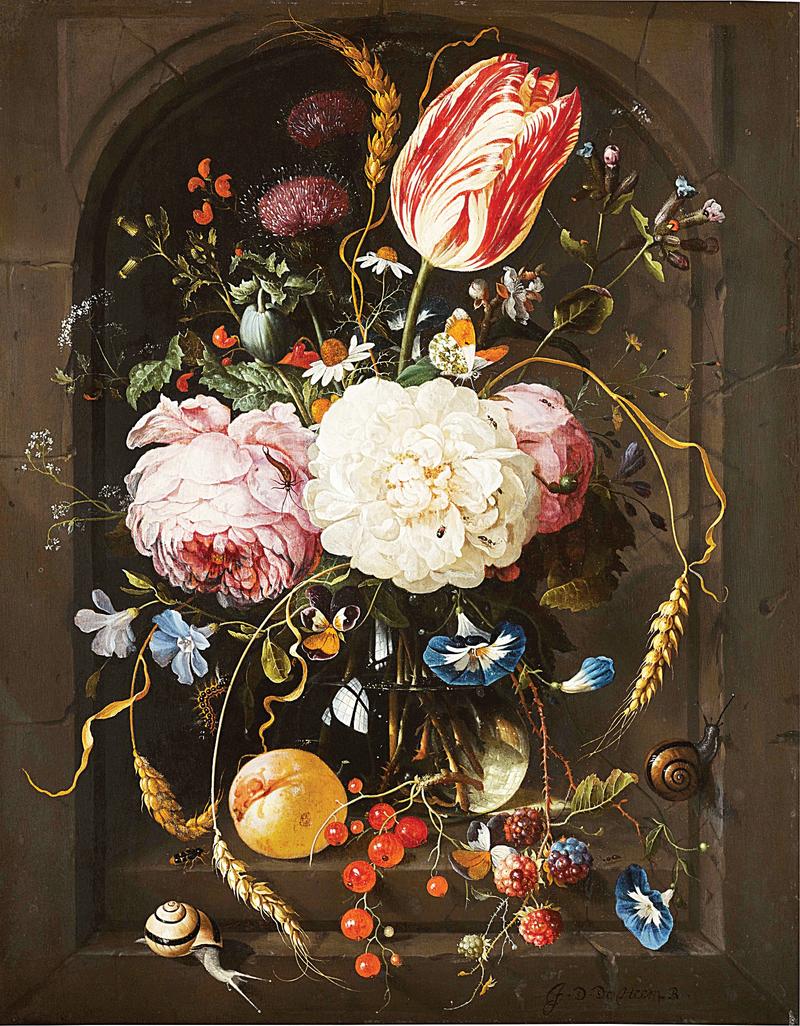 This still life by Jan Davidsz. de Heem far outstripped the 1m-1.5m pound estimate at Sotheby’s December auction in London to realize 2.7m pounds ($3.3m). (PHOTO COURTESY SOTHEBY’S)
This still life by Jan Davidsz. de Heem far outstripped the 1m-1.5m pound estimate at Sotheby’s December auction in London to realize 2.7m pounds ($3.3m). (PHOTO COURTESY SOTHEBY’S)
On a roll
HKPM’s Odysseys follows on the heels of the Hong Kong Museum of Art’s (HKMoA) The Road to the Baroque: Masterpieces from the Capodimonte Museum. Highlights included works by Titian as well as the Baroque’s Annibale Carracci and Artemisia Gentileschi. “The exhibition was well received by the public, attracting more than 128,000 visitors over three and a half months,” notes Lo Yan-yan, the museum’s curator of international programs.
For HKMoA, it is the second such triumph. Between October 2020 and March 2021, the museum hosted Hong Kong’s first-ever Sandro Botticelli exhibition, Botticelli and His Times: Masterworks from the Uffizi, showcasing over 40 works by the artist and contemporary masters.
“The positive reception of Renaissance and Baroque exhibitions in Hong Kong since 2020 is an exciting indication of the local community having access to European art history, especially during the pandemic with traveling significantly restricted,” says Sim Hinman Wan, lecturer in early modern art history at the University of Hong Kong. “While the numerous opportunities for the public to view and learn about preindustrial European art objects is unanticipated, it signals prospects for cultural institutions and art collectors to pay more attention to visual expressions, motifs, and concepts that are often dismissed as old-fashioned or elitist in the 21st century.”
Wan is, however, skeptical about the didactic value of these exhibitions for the majority of Hong Kong people. “The museums have not been explicit about how audiences would gain historical knowledge from engaging with the exhibited objects,” he says. “Why would the religious world of Botticelli’s time, newly invested in ancient Greco-Roman mythology, matter to Hong Kong today? … How do we make sense of the opulence, fantasies and decadence in the collections of the Liechtenstein princes … when Hong Kong is a proudly practical culture guilty of obsession with luxuries?”
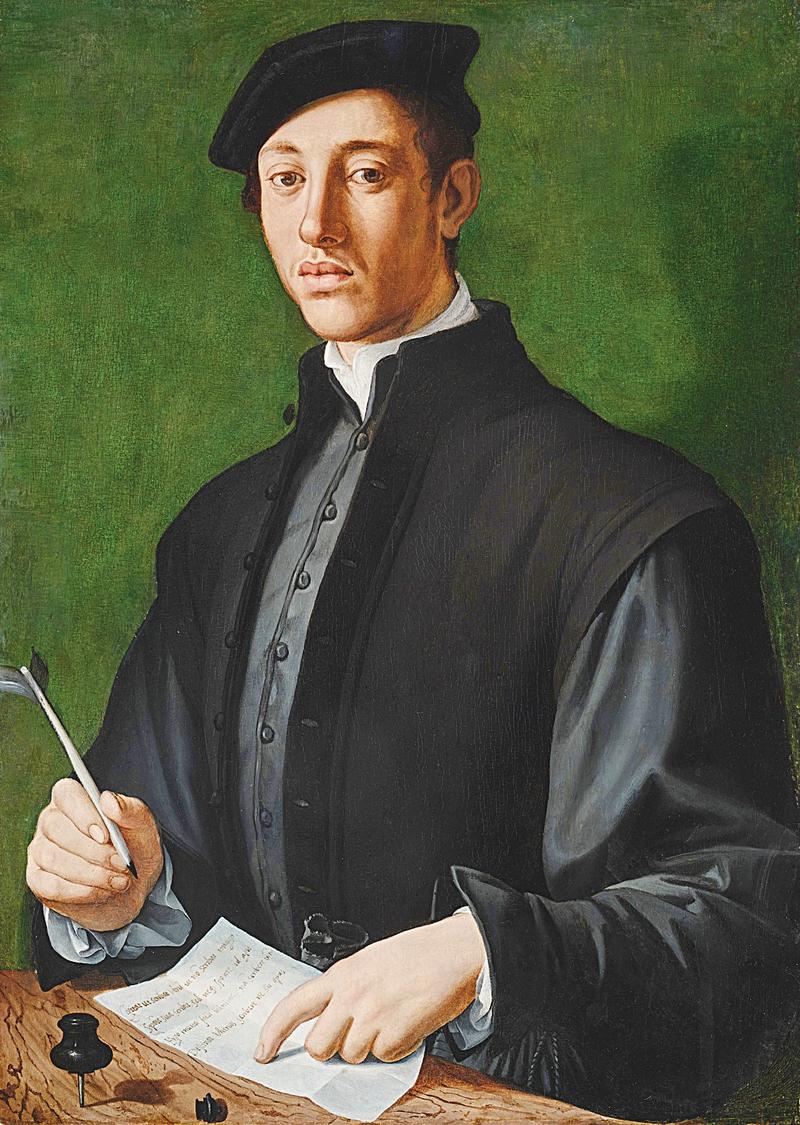 Rediscovered after remaining misattributed for nearly 100 years, this Bronzino goes to auction Jan 26 at Sotheby’s New York, with an estimate of $3m-$5m. (PHOTO COURTESY SOTHEBY’S)
Rediscovered after remaining misattributed for nearly 100 years, this Bronzino goes to auction Jan 26 at Sotheby’s New York, with an estimate of $3m-$5m. (PHOTO COURTESY SOTHEBY’S)
Arguably, though, there is intrinsic value in being moved in the presence of an old master painting — and you don’t need to know anything about art history for that to happen. “A great work of art by a great master — like Titian, Rubens, Rembrandt, Botticelli — is going to evoke in any human some sort of reaction,” says Apostle. “There is a transcendent quality.”
“(Old masters) can speak to us in different ways, but they all have this ability to hit us and make a huge impact,” concurs Bell. “They have the power to move us and enhance our lives.”
At the same time, “Hong Kong does not currently have an institutional framework particularly supportive of Renaissance and Baroque art, or any preindustrial European art,” notes Wan. “It is a question for the cultural institutions whether the presence of European history in a Chinese environment is about intercontinental exchanges or upholding the Western trajectory, and ultimately whether Hong Kong is dedicated to shedding or coexisting with its colonial past.
“Until we have more of an idea, my speculation is that recent, ongoing and future exhibitions of old masters are entertaining events for a world-class city, and may generate interest in collecting among the privileged.”
If you go
Odysseys of Art: Masterpieces Collected by the Princes of Liechtenstein
Dates: Through Feb 20
Venue: Hong Kong Palace Museum, West Kowloon Cultural District
Uffizi Self-Portrait Masterpieces
Dates: Through Feb 26
Venue: Bund One Art Museum, 1 Zhongshan East Road, Huangpu District, Shanghai
bundoneartmuseum.com/en/category/exhibition


